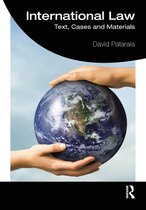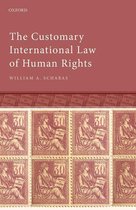The International Law of Property Ebook Tooltip Ebooks kunnen worden gelezen op uw computer en op daarvoor geschikte e-readers.
Afbeeldingen
Sla de afbeeldingen overArtikel vergelijken
- Engels
- E-book
- 9780191502521
- 01 mei 2014
- Adobe ePub
Samenvatting
Does a right to property exist under international law? The traditional answer to this question is no: a right to property can only arise under the domestic law of a particular nation. But the view that property rights are exclusively governed by national law is obsolete. Identifiable areas of property law have emerged at the international level, and the foundation is now arguably being laid for a comprehensive international regime. This book provides a detailed investigation into this developing international property law. It demonstrates how the evolution of international property law has been influenced by major economic, political, and technological changes: the embrace of private property by former socialist states after the end of the Cold War; the globalization of trade; the birth of new technologies capable of exploiting the global commons; the rise of digital property; and the increasing recognition of the human right to property. The first part of the book analyzes how international law impacts rights in specific types of property. In some situations, international law creates property rights, such as rights in aboriginal lands, deep seabed minerals, and satellite orbits. In other areas, it harmonizes property rights that arise at the national level, such as rights in intellectual property, rights in foreign investments, and security interests in personal property. Finally, it restricts property rights that may be recognized at the national level, such as rights in celestial bodies, contraband, and slaves. The second part of the book explores the thesis that a global right to property should be recognized as a general matter, not merely as a moral precept but rather as an entitlement that all nations must honour. It establishes the components of such a right, arguing that the right to property at the international level should be seen in the context of five key components of ownership: acquisition, use, destruction, exclusion, and transfer. This highly innovative book makes an important contribution to how we conceptualize the protection of property and to the understanding that much of this protection now takes place at the international level.
Productspecificaties
Inhoud
- Taal
- en
- Bindwijze
- E-book
- Oorspronkelijke releasedatum
- 01 mei 2014
- Ebook Formaat
- Adobe ePub
- Illustraties
- Nee
Betrokkenen
- Hoofdauteur
- John G. Sprankling
- Hoofduitgeverij
- Oup Oxford
Lees mogelijkheden
- Lees dit ebook op
- Desktop (Mac en Windows) | Kobo e-reader | Android (smartphone en tablet) | iOS (smartphone en tablet) | Windows (smartphone en tablet)
Overige kenmerken
- Studieboek
- Ja
- Verpakking breedte
- 162 mm
- Verpakking hoogte
- 31 mm
- Verpakking lengte
- 240 mm
- Verpakkingsgewicht
- 798 g
EAN
- EAN
- 9780191502521
Kies gewenste uitvoering
Prijsinformatie en bestellen
De prijs van dit product is 159 euro.- E-book is direct beschikbaar na aankoop
- E-books lezen is voordelig
- Dag en nacht klantenservice
- Veilig betalen
Rapporteer dit artikel
Je wilt melding doen van illegale inhoud over dit artikel:
- Ik wil melding doen als klant
- Ik wil melding doen als autoriteit of trusted flagger
- Ik wil melding doen als partner
- Ik wil melding doen als merkhouder
Geen klant, autoriteit, trusted flagger, merkhouder of partner? Gebruik dan onderstaande link om melding te doen.








